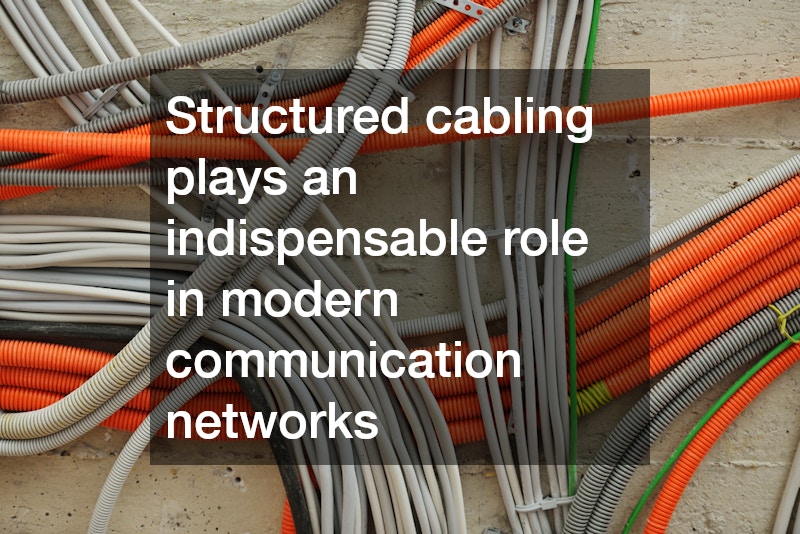Structured cabling forms the backbone of modern communication systems, providing a standardized approach for organizing and managing the physical connectivity of networks. It is a comprehensive system designed to support various data, voice, and multimedia services with flexibility and efficiency. This guide aims to offer beginners an insightful understanding of structured cabling and its crucial role in today’s networking landscape.
What is Structured Cabling?
Definition and Components
Structured cabling refers to a set of standardized practices used to design and install a cabling system that can support diverse hardware and services. The key components of structured cabling include patch panels, cables, and connectors, each contributing to the system’s overall functionality and efficiency. Through these components, structured cabling ensures orderly network installations, enabling ease of management and troubleshooting.
Cabling systems are meticulously planned to accommodate future expansions without the need for complete overhauls. Patch panels consolidate connections, making it easier to manage the network infrastructure by clearly labeling ports and cables. Connectors and cables work in tandem to maintain signal integrity, reduce interference, and support various network topologies.
The modular nature of structured cabling accommodates rapidly evolving technology and diverse communication requirements. Its flexibility allows organizations to integrate new devices and upgrade systems with minimal disruption. Above all, structured cabling builds a scalable foundation that supports robust data transmission and reliable network performance across different sectors.
History and Evolution
Structured cabling has experienced significant evolution since its inception, closely tied with advancements in telecommunications and computing. Originally, it addressed chaotic and proprietary wiring systems that lacked interoperability, leading to frequent failures and maintenance challenges. Over decades, standards emerged to address these issues, heralding new era in network reliability and efficiency.
In the early 1990s, the introduction of the ISO/IEC 11801 standard marked a milestone in structured cabling, providing a framework for designing efficient network infrastructures. This standardization paved the way for the widespread adoption and uniformity in cabling practices, significantly boosting network performance and reliability. Subsequently, technological advancements and increasing demands for seamless connectivity fueled further refinements and updates to the standards.
Today, structured cabling supports a myriad of applications, from high-speed internet to complex data centers and multimedia installations. Its evolution continues with the integration of smart technologies and emphasis on sustainable practices. The resilience and adaptability of structured cabling make it an enduring component of modern communication infrastructure.
Benefits of Structured Cabling
One of the most significant benefits of structured cabling is improved organization, creating an orderly infrastructure ideal for troubleshooting and expansion. By reducing cable clutter, it minimizes potential failure points and enhances overall system reliability. With a structured approach, network maintenance becomes less time-consuming and error-prone.
Scalability is another advantage, enabling seamless integration of new technologies and devices as organizations grow. Structured cabling systems are designed with growth in mind, ensuring that network upgrades and expansions can be accomplished without major overhauls. This characteristic supports long-term cost-efficiency by minimizing the need for constant re-cabling and associated downtime.
Performance optimization also sets structured cabling apart, as it supports higher bandwidths and faster data transmission. Enhanced performance caters to the increasing demands of modern businesses for uninterrupted communication and data access. Ultimately, structured cabling lays a robust foundation that enables businesses to leverage cutting-edge technologies and maintain competitiveness in the digital era.
How to Implement a Structured Cabling System?
Planning and Design
The implementation of a structured cabling system starts with thorough planning and design, which are critical to ensure that the infrastructure meets current and future needs. Proper planning involves an assessment of the organizational requirements and an understanding of the building’s architecture. It is essential to collaborate with stakeholders to determine goals, budget constraints, and specific technological requirements.
A well-designed cabling system incorporates redundancy and scalability, allowing for the integration of future technologies without costly modifications. Comprehensive documentation, including floor plans and schematics, supports clarity and informed decision-making throughout the life cycle of the system. Choosing appropriate materials and adhering to industry standards is crucial for maintaining system quality and performance.
Design considerations also encompass environmental factors such as temperature, humidity, and interference from other systems. The layout of data centers and network rooms should optimize airflow and cooling efficiency, ensuring reliable operation. Implementing a robust design and planning process is key to achieving a structured cabling system that offers long-term dependability and flexibility.
Installation Process
The installation of a structured cabling system involves meticulous execution of the planned design, following best practices to achieve optimal results. Certified installers ensure that all components, from cables to patch panels, are correctly and securely installed to prevent any potential disruptions. Attention to detail during installation reduces the likelihood of conditions that could compromise system performance or necessitate repairs.
Adhering to industry standards, such as those established by the Telecommunications Industry Association (TIA), is fundamental during the installation process. These standards provide guidelines for installer certifications, cable specifications, and safety precautions to ensure uniformity and reliability across networks. Installers also account for cable management, labeling each component to facilitate maintenance and troubleshooting efforts.
Testing and Maintenance
Once a structured cabling system is installed, ongoing testing and maintenance are crucial to ensure its continued effectiveness and longevity. Regular testing identifies potential vulnerabilities or deteriorations in the network, allowing for preemptive maintenance actions. Such proactive approaches reduce the risk of unexpected failures and costly downtime.
Maintenance involves periodic inspection of components and connections to verify that performance levels meet the operational needs of the organization. It also includes updates and system reconfiguration to accommodate new technologies and changing business requirements. Documentation of maintenance activities is vital for compliance and for guiding future service activities.
In conclusion, structured cabling plays an indispensable role in modern communication networks, offering reliability, flexibility, and efficiency. A well-designed and implemented cabling infrastructure supports seamless connectivity and drives future-ready businesses. As technology continues to evolve, the adaptability and scalability of structured cabling ensure that organizations remain at the forefront of digital transformation.
.



